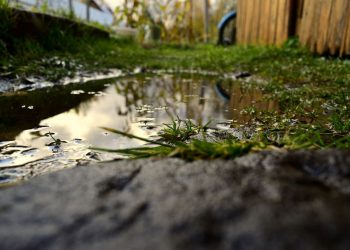Mold is extremely common and can develop slowly, often without homeowners being aware of it. Some types of mold are harmless, but black mold can cause headaches, coughing, sneezing, and irritation of the eyes or nose. It can also aggravate existing health problems, such as asthma. Often by the time a mold problem is identified, it’s so serious that it requires expensive cleanup or renovations.
How to Find out If Your House Has Mold
Sometimes mold is visible, but often it isn’t. You may notice an unusual smell, or family members may have unexplained health issues. If you suspect you might have a problem, you can look for evidence of mold and sources of moisture. Check behind drywall or wallpaper, under ceiling tiles and carpet, inside ducts, and in walls around pipes for excessive moisture caused by leaks, flooding, or inadequate ventilation or insulation.
How to Deal With Mold
If the amount of mold is limited, you may be able to dry out the area with fans or ventilation and clean or dispose of moldy items. Nonporous or semi-porous items may be able to be cleaned, but you should dispose of porous objects that have been contaminated with mold. Research appropriate methods and safety precautions before you start cleaning.
For a widespread mold problem, you’ll need to have professionals assess the situation. Depending on the location and extent of the mold, they might be able to clean it and make repairs to prevent further mold, or you might need to have sections of your house gutted. If your home requires major cleaning or renovations, your family may need to relocate temporarily to protect your health.
Before you hire a mold removal company, check the company’s license, call references and find out if any serious complaints have been filed against the business. Get evaluations and estimates from two or three companies. Be prepared for the final bill to be higher than the estimate if the company you hire uncovers more damage once the cleaning and restoration process begins.
How to Prevent Mold
Look around your home periodically for areas where moisture may accumulate or leak into your home. Pay attention to areas where you don’t typically look, such as the gutters, attic and crawlspace. Have the roof inspected and any leaks repaired. Check the caulk around windows, sinks, showers and bathtubs, and replace it if necessary. If you notice any plumbing leaks, even ones that seem minor, have them fixed so they don’t get worse and lead to mold.
Take a Mold Problem Seriously
Mold is extremely common, and many people don’t realize their home is affected until they begin to experience health problems. If family members have had unexplained symptoms or you have noticed an unusual smell, you may have mold. Investigate and take action immediately if you find a problem. Controlling moisture and addressing any leaks promptly can prevent mold or keep it from getting out of control.











